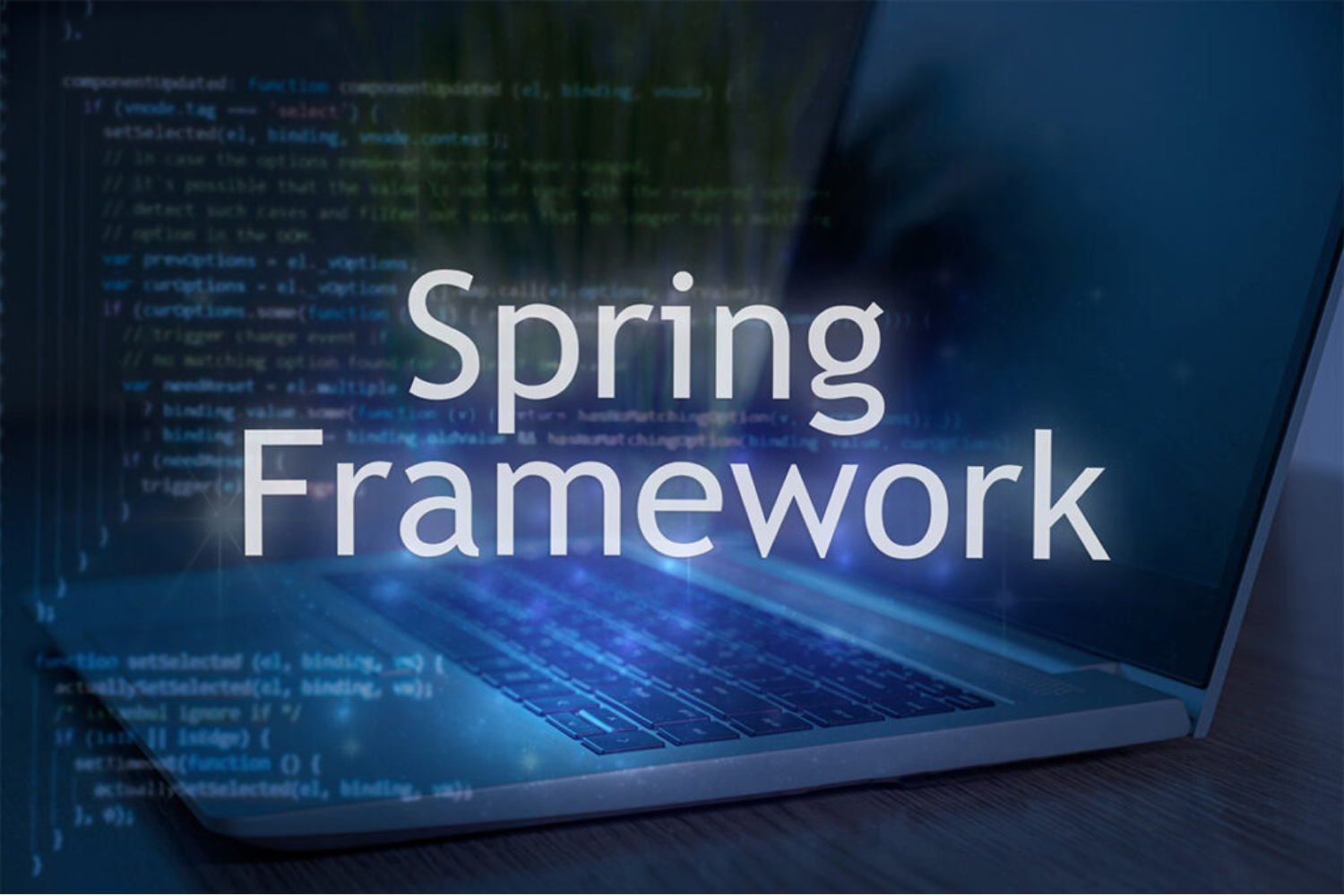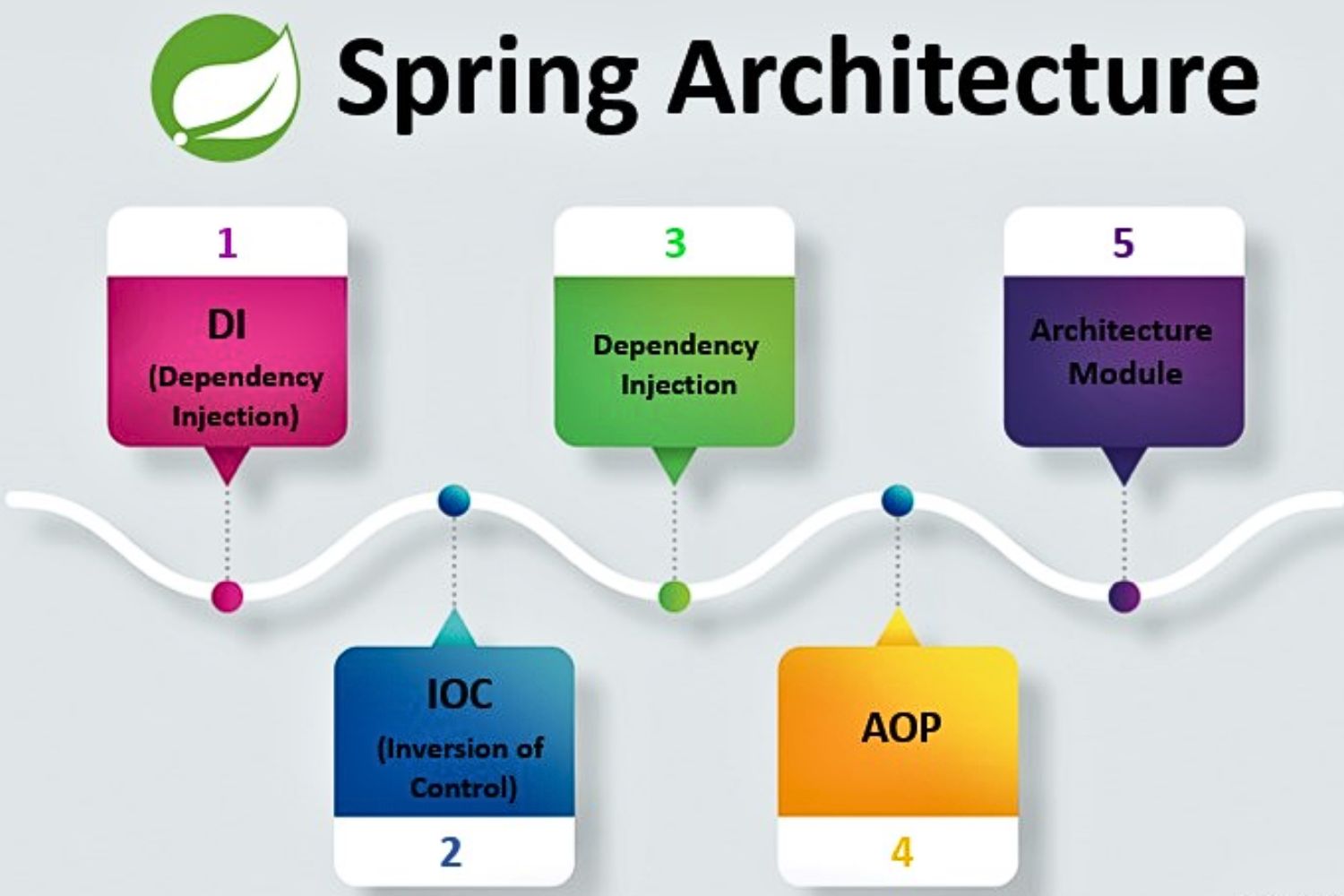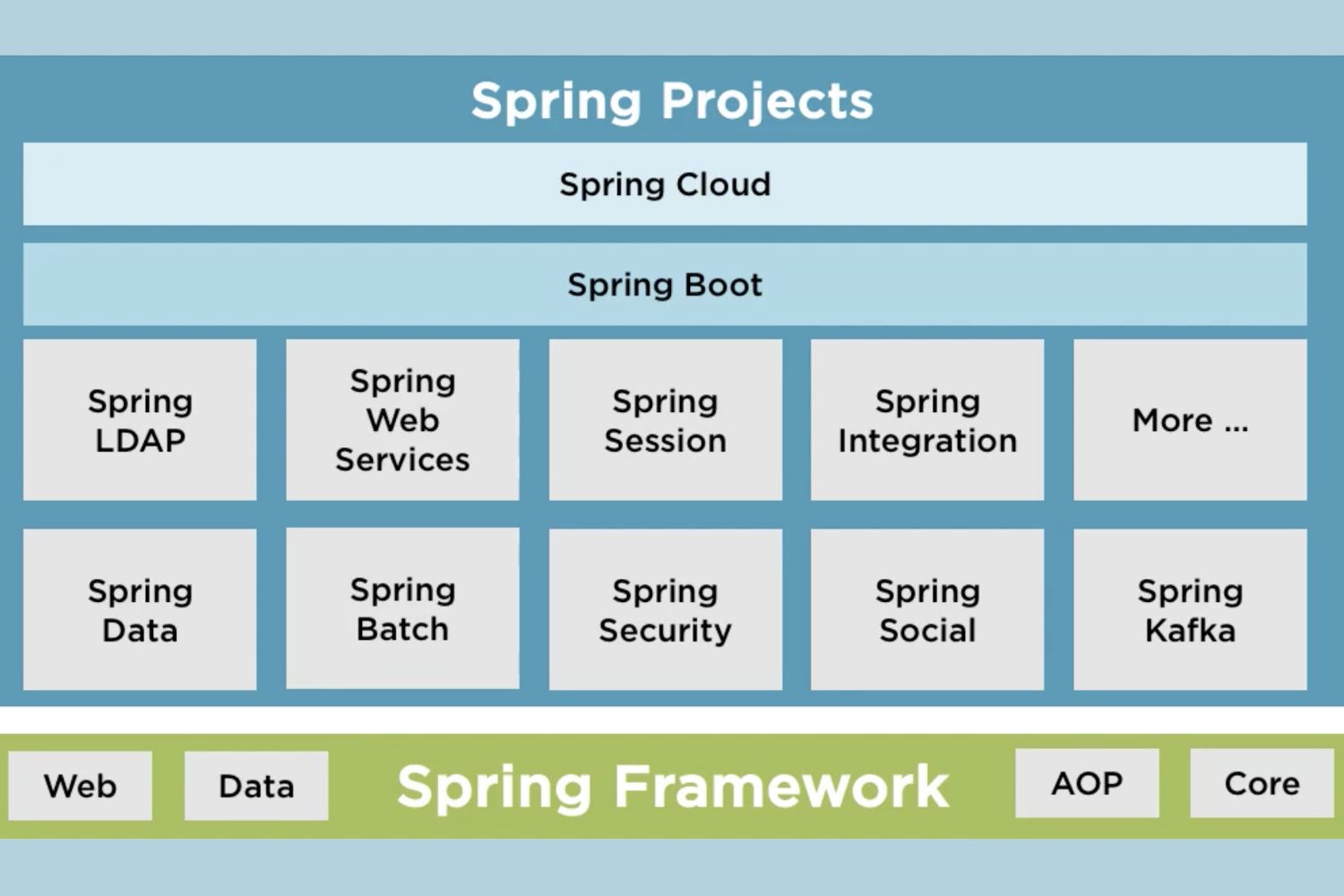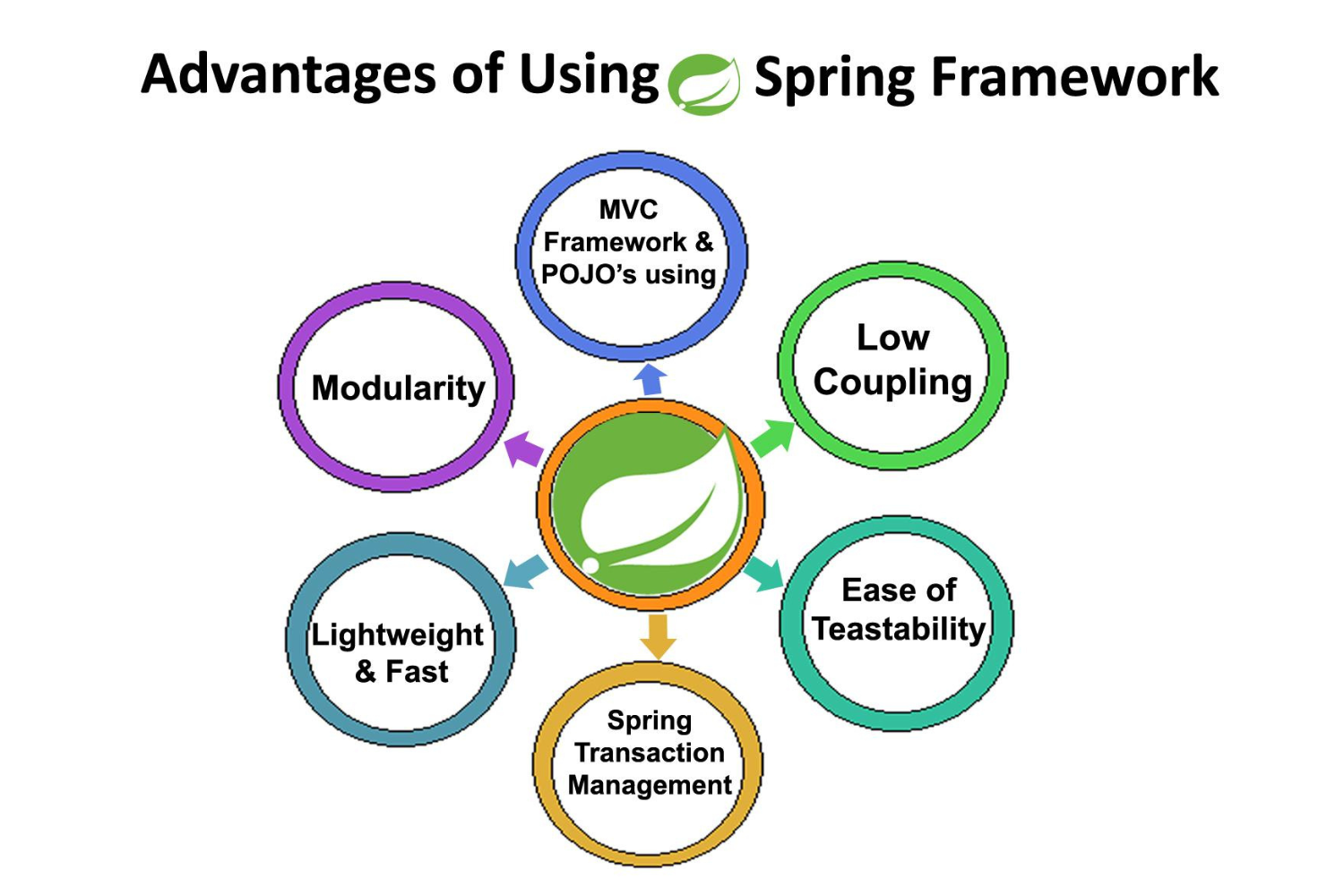
Spring
In the context of Java backend development, a “Spring” typically refers to the Spring Framework, a powerful and widely used open-source framework that simplifies the development of robust and scalable enterprise applications. Spring provides a comprehensive infrastructure for building Java applications, with a focus on improving modularity, maintainability, and testability. It offers a variety of modules and features, including dependency injection, aspect-oriented programming, and support for transaction management. One of the core concepts in the Spring Framework is Inversion of Control (IoC), which allows developers to decouple the components of their application and manage their dependencies more efficiently. Overall, Spring has become an integral part of the Java backend development ecosystem, enabling developers to build robust, scalable, and maintainable applications efficiently.
FUNDAMENTALS OF SPRING FRAMEWORK:
1. Dependency Injection (DI): A design pattern and core concept of Spring that allows you to inject the dependencies of a class rather than hardcoding them, making your code more flexible and testable.
2. Inversion of Control (IoC): IoC is a principle in Spring where the control over the lifecycle and management of objects is shifted from the application code to the Spring container, promoting loose coupling.

3. Spring Bean: In Spring, a bean is a managed Java object created by the Spring container, and it typically represents a component of your application.
4. Application Context: The central interface in Spring for providing configuration information and managing the beans in your application.
5. Aspect-Oriented Programming (AOP): A paradigm in Spring that allows you to separate cross-cutting concerns like logging, security, and transactions from the core application logic.
6. Spring MVC: A module of the Spring Framework for building web applications. It provides a Model-View-Controller architecture to handle web requests and responses.
7. Spring Boot: An extension of the Spring Framework that simplifies the process of building production-ready applications by providing defaults and auto-configuration.
8. Spring Data: A project within the Spring ecosystem that simplifies data access and manipulation, including working with relational databases, NoSQL databases, and more.
9. Spring Security: A part of the Spring ecosystem that provides comprehensive security features for your applications, including authentication, authorization, and protection against common security threats.
10. Transaction Management: Spring offers built-in support for managing transactions, ensuring data consistency and reliability in database operations.
TYPES OF SPRING FRAMEWORK:
Here are different types of Spring frameworks which serve specific purposes and can be used individually or in combination, depending on the requirements of your Java backend development project:
Spring Core: The Spring Core framework, often referred to simply as the Spring Framework, provides the fundamental building blocks for developing Java applications. It includes features like Dependency Injection and Inversion of Control, promoting modular and maintainable code

Spring Cloud: Spring Cloud is a set of tools and frameworks for building microservices and managing distributed systems. It provides solutions for service discovery, load balancing, distributed configuration, and more.
Spring Integration: Spring Integration is an extension of the Spring framework that facilitates the integration of different systems and communication between applications. It offers a wide range of enterprise integration patterns and adapters for various messaging systems.
Spring Batch: Spring Batch is a framework for building batch processing applications in Java. It simplifies the development of tasks like data import, export, and data transformation, with features for job scheduling and management.
Spring WebFlux: Spring WebFlux is a reactive programming framework in the Spring ecosystem. It provides non-blocking, asynchronous support for building scalable, high-performance web applications and microservices.
BENEFITS OF SPRING FRAMEWORK:
Modularity: Spring promotes a modular and organized codebase by facilitating the division of an application into smaller, manageable components, making it easier to develop and maintain.
Reusability: Spring components and services can be easily reused in different parts of an application or across multiple projects, reducing code duplication and saving development time.

Simplified Testing: Spring’s design and support for DI and IoC make it easier to write unit tests and perform integration testing, leading to more robust and reliable code.
Productivity: Spring Boot’s opinionated defaults and auto-configuration streamline application development, reducing the need for extensive manual setup and configuration.
Community and Ecosystem: Spring has a large and active community, offering a wealth of resources, libraries, and third-party integrations, making it easier to find solutions and support for development challenges.
Scalability: Spring provides tools for building scalable applications, and Spring Cloud offers solutions for microservices and distributed systems, enhancing an application’s ability to grow as needed.
Data Access: Spring Data simplifies data access and persistence by providing a consistent and high-level abstraction over various data sources, reducing the effort required for database interaction.
Batch Processing: Spring Batch simplifies the development of batch processing applications, enabling tasks like data import, export, and transformation with ease.
JOB ROLES:
1. Spring Developer
2. Java Developer with Spring Framework
3. Spring Boot Developer
4. Spring Microservices Developer
5. Full Stack Developer (with Spring)
6. Java Software Engineer (Spring)
7. Senior Java Developer (Spring)
8. Spring Framework Architect
9. Spring Integration Specialist
11. Spring Batch Developer
12. Spring Data Engineer
13. Spring Cloud Specialist
14. Spring WebFlux Developer
15. Spring Framework Consultant
16. Spring DevOps Engineer
17. Spring QA Engineer
18. Spring Support Engineer
19. Spring Trainer or Instructor
20. Spring Framework Freelancer

Course Highlights/ Details:
1. Suited for students, fresher’s, professionals, and corporate employees.
2. Live online classes
3. 4-month program
4. Certificate of completion
5. Decision Oriented Program of Analysis
6. Live Classes by highly experienced faculties
7. Hands-on experience with real-life case studies.
Salary:
Spring Developers from SCODEEN Global have received packages ranging from ₹13 Lakhs to ₹35 lakhs per Annum.

CONCLUSION:
In conclusion, the Spring framework is a versatile and widely adopted toolset for Java backend development, offering a range of features and benefits that significantly enhance the process of building enterprise-grade applications. Its core principles of modularity, dependency injection, and inversion of control promote maintainable, loosely coupled, and testable code. Spring’s extensive ecosystem includes Spring Boot for rapid application development, Spring Data for simplified data access, Spring Security for robust authentication and authorization, and Spring Cloud for micro services and distributed systems, among other components.

